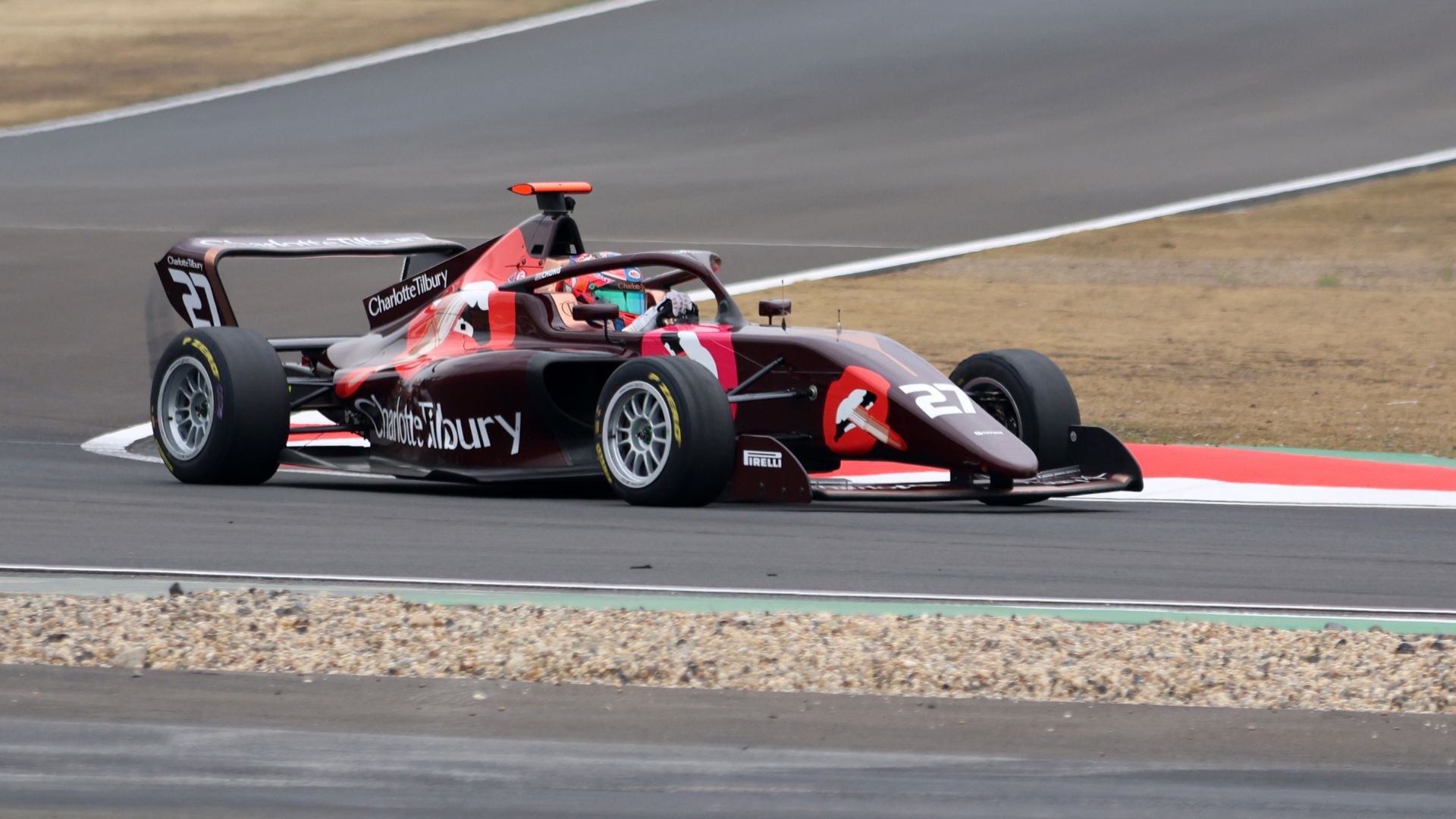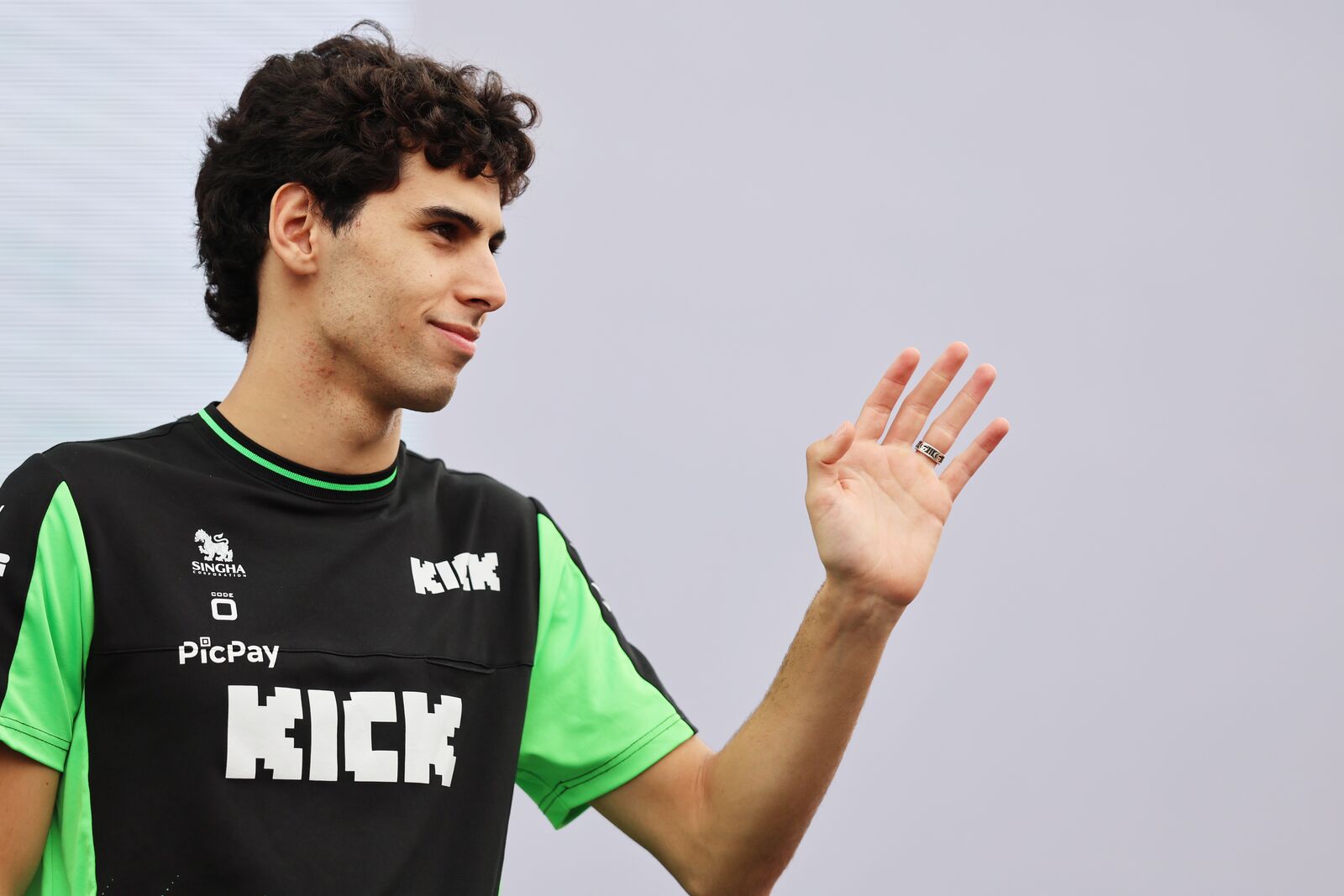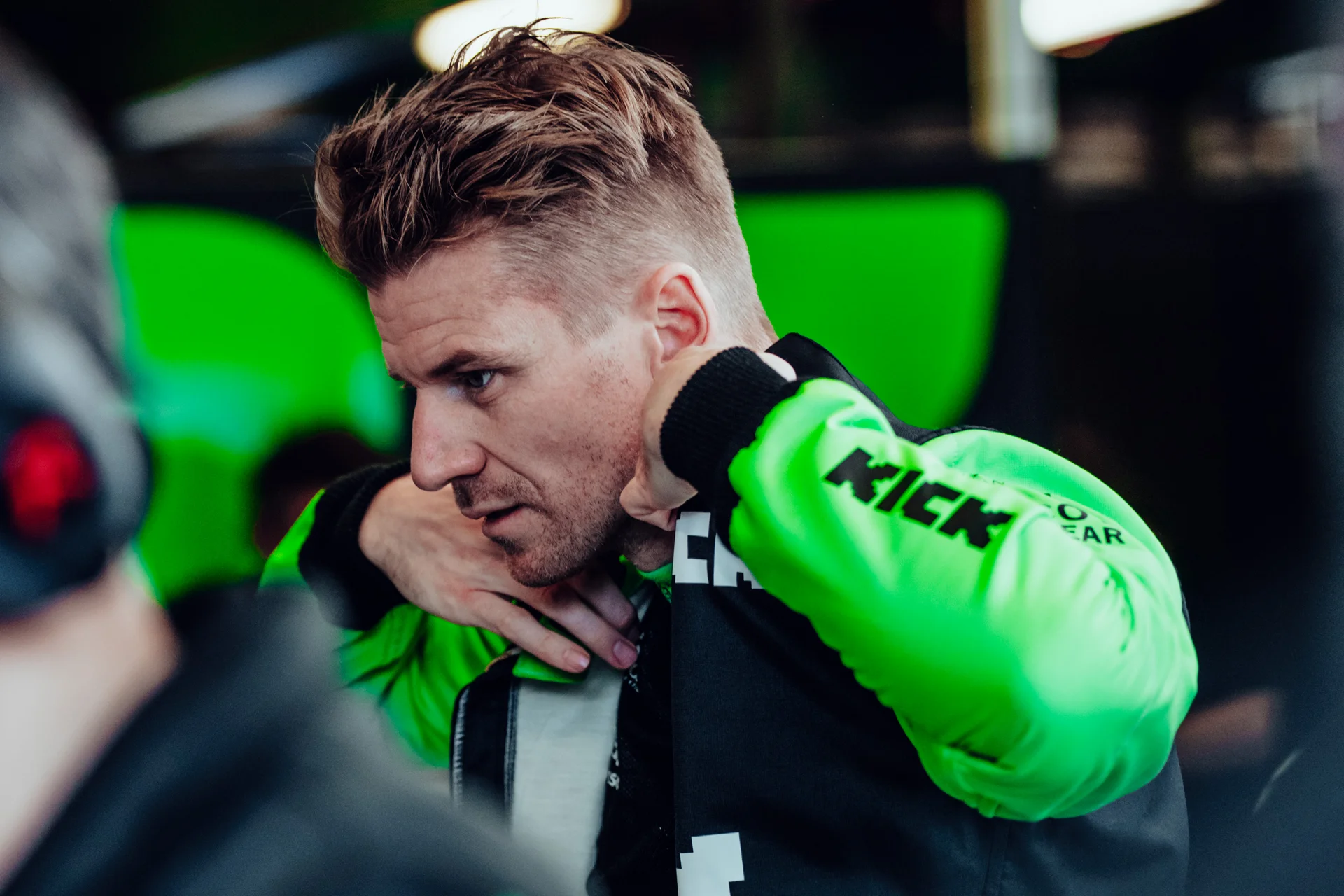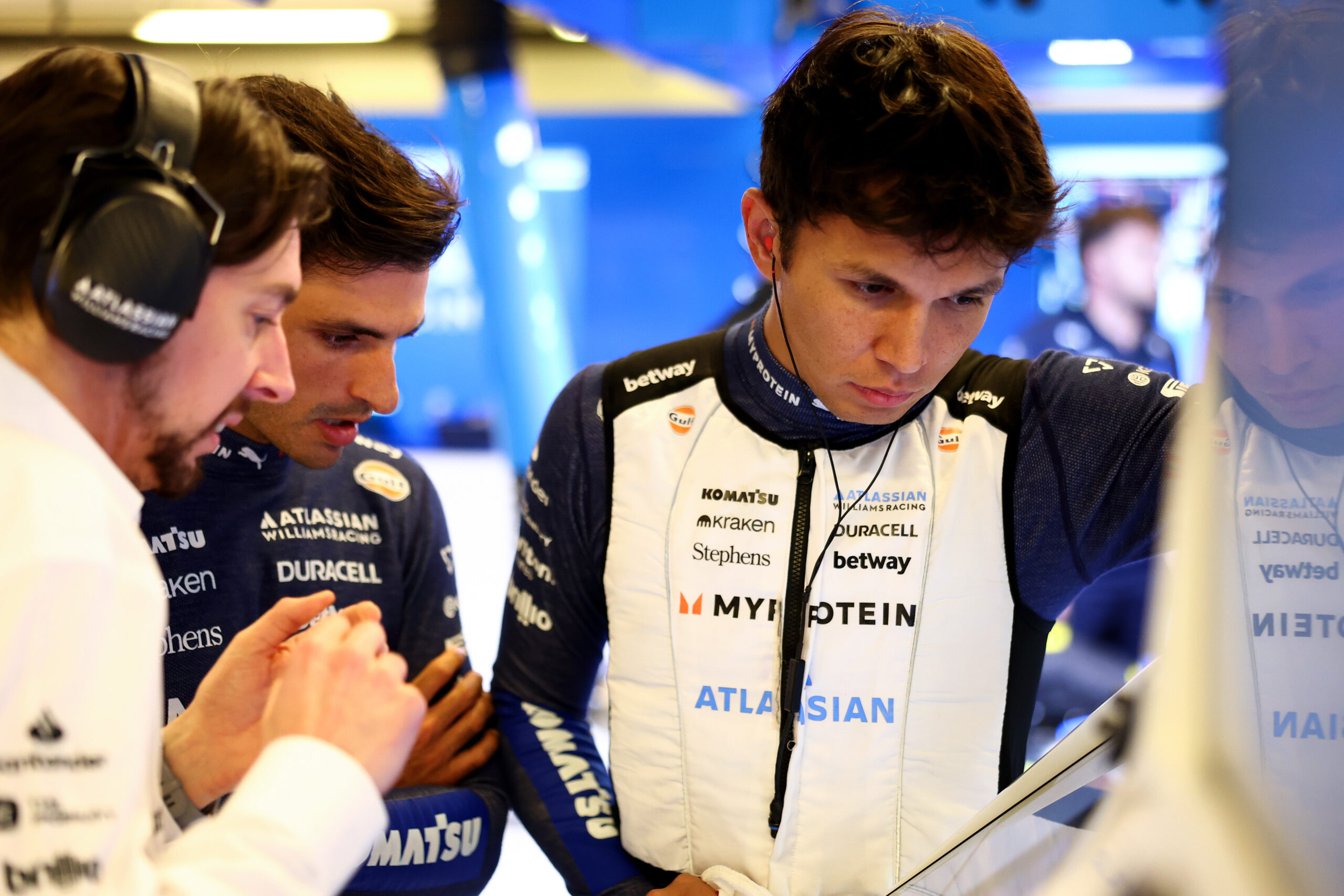At the end of July, Chloe Chong appeared on the Fast Forward Podcast. Here she spoke about the underlying challenges in racing. Many of these challenges are unbeknown to fans of the sport. She currently sits in P11 of the F1 Academy Championship Standings, with 11 points. Despite this, Chong is no stranger to the challenges and misfortunes in racing.
The British driver saw her best result of the 2025 season in Race 3 in Montreal, with a P5. After a tough season in 2023, she took a year off, and came back in 2025. She looked for and continues to fight for a season of redemption.
The little know struggles of extra neck muscles for women
What was seemingly an unrelated question, soon turned into an important and potentially unknown challenge for females in motorsport. When asked about an item she packs but doesn’t use while travelling, Chong responded “a travel pillow”.
This led into the all important discussion of the neck muscles of women. It is no secret that racing driver require strong necks to handle the G-Force faced while racing. On the other hand, the more muscle a female has, the more headaches and pain they face.
A seemingly unimportant travel pillow, can actually help to ensure her neck doesn’t get anymore damaged during travel. With female necks being less flexible than a male’s, travel is something that could cause pain. Especially, when unknowingly twisting your neck during sleep.
“One that I rarely use that I always pack is a travel pillow. Because I can never find a way because I have to get comfortable. I have to listen to music when I sleep. Like normally the best solve for my sleepiness on planes, especially with all the long haul flights that we have this year, is sleep next to a window. I can’t sleep like with my neck half to my head.
“I mean, I think people underestimate the fact that as girls in racing, we have weirdly disproportionate neck sizes. And with more muscle, you get a lot more aching and a lot more just in headachy stuff. So it’s really important. Yeah. To make sure that your necks there, but it also means that our necks are a bit less flexible.”
F1 Academy’s access to physio
The F1 Academy Championship provides drivers with a physio, which has proved greatly beneficial to Chong. She reflects on a funny story from Miami, in which she noticed a problem in her neck after disembarking from the plane. She headed over to the F1 Academy physio to get it checked out.
While Chong thought she was looking straight up, the physio noticed she was actually looking more to the right. She acknowledged that this wasn’t a problem that would be fixed before the next session.
“It just means that everything is just so much more tense all the time. And I think that’s what’s really good with F1 Academy is that they provide a physio because I got off the plane to Miami and I was like, there’s something wrong with my neck.
“I went to her and she was like, Chloe, look up. I looked up and she was like, you’re looking to the right. And I was like, no, I’m looking directly up. And she was like, no, your head is literally jolted to the right. So she was like, with the 15 minutes we have now, we can’t solve this. You need to come back to me again.”
A driver coach for support, until budget became an issue
During the first three rounds of the season, Chong was accompanied by driver coach Jonathan Hoggard. Hoggard is an incredibly successful driver himself, and has proved to be grounding for Chong. She emphasises his ability to calm her anxiety or nerves, proficient in calming drivers under pressure.
Unfortunately, budget soon became an issue, and she was no longer able to work with Hoggard. Chong states that without the issue of budget, there is no doubt that she wouldn’t have brought him to every round. Cutting costs means that people on the ground have to go first. This leaves Chong with just herself and her engineer.
“Yeah, I mean, for the first three rounds, I have driver coach Jonathan with me. Jonathan Hoggard, he won the Autosport Award a few years ago, so he’s a very successful driver and he’s a very grounding guy as well. He’s very calm and knows how to deal with, I guess, people that feel like they’re a bit under pressure, a bit nervous or anxious.
“So we’ve had him for the first three races and if budget was an issue, we would have brought him every race because he is very helpful. But yeah, we’re trying to control the volume of people on the ground, and just control costs.
“So unfortunately, he’s not coming to Montreal, but it will be myself, my engineer and because it’s one of my home races, my dad is coming.”
Her father for support in Montreal
Due to Montreal being one of Chong’s home races, her dad was in attendance. Despite his attendance, the Brit told him to stay right away. Although she claims not to be superstitious, she notes that she performed well in Miami with him close by.
On an average weekend, it is simply Chong and her engineer, who she tells to be a wonderful man. She adds that he is an Australian engineer, and part time seller of coffee grinders. The Brit spoke about their strong relationship, and ability to work well together on race weekends and simulator days.
“I told him that he has to stay a certain distance away and to be fair, he’s been very good with it and last weekend he was there and I performed well. So I’m not superstitious about that, just I need to manage my space, if that makes sense and make sure that people understand that as well. But yeah, it’s normally just myself and my engineer when we do sim days and all that sort of preparation and we get along really well.
“He’s a great guy, he’s Australian and actually he makes like coffee grinders as a side hustle. So he loves his coffee and he’s been a really great engineer and I can’t thank him enough for everything that he’s taught me.”
Budget as an issue
Chong commented on the two aspects of the awareness of racing fans in regard to budget. One end of the spectrum sees them having no clue about cost at all, while the other end simply believes every racer is incredibly rich.
The Brit opened up, sharing that she wouldn’t put herself on the rich of poor end of the spectrum. While she isn’t completely unable to put any of her own money into her racing, she also isn’t able to simply pay for her whole season without a second thought.
“Well, I think it comes in either one of two angles. One angle is that you don’t, like, you don’t have any idea at all about the cost and that you don’t actually know that people are paying a million pounds a year to race in F4.
“But then the other side of it is that people think that everyone in motorsports is super rich and that can pay one million a year to race in F4, etc. I would say that I’m definitely not on either end of the spectrum where I have zero money to race at all and can’t put any money of my own into racing or my family’s money into racing. But I’m also not on that end that’s like, yeah, I can pay for my season of racing fine and several seasons after that.“
Creating her own success
Chong praises her mum for teaching her to create her own success without the help of others. She acknowledged how lucky she was to even have the money to take part in go-karting let alone single seater racing.
While go-karting now seems like a cheap path of motorsport, she reflects on paying roughly £10,000 a year to compete in karts. She remains incredibly grateful for her sponsors and opportunities to be an ambassador. This has created opportunity for her to meet people, and prove how well women can market.
“I think the way that my mum’s taught me as well is that if I want to create my own success, it can’t come from other people’s help. So it’s important for me to firstly understand that I’m very fortunate to be able to even go go-karting and do go-karting which costs what seems like a tiny amount of money for racing.
“Yeah, but it was expensive like paying 10 grand a year to go go-karting and to do even one season in F1 Academy is difficult. And I’m so grateful to find sponsors such as my sponsor Zwift, such as being ambassador for Canyon and having all the partnerships surrounding F1 Academy like Charlotte Tilbury because it creates a platform where you can bounce off of it and find other people and it shows us how women are very good marketers as well.”





